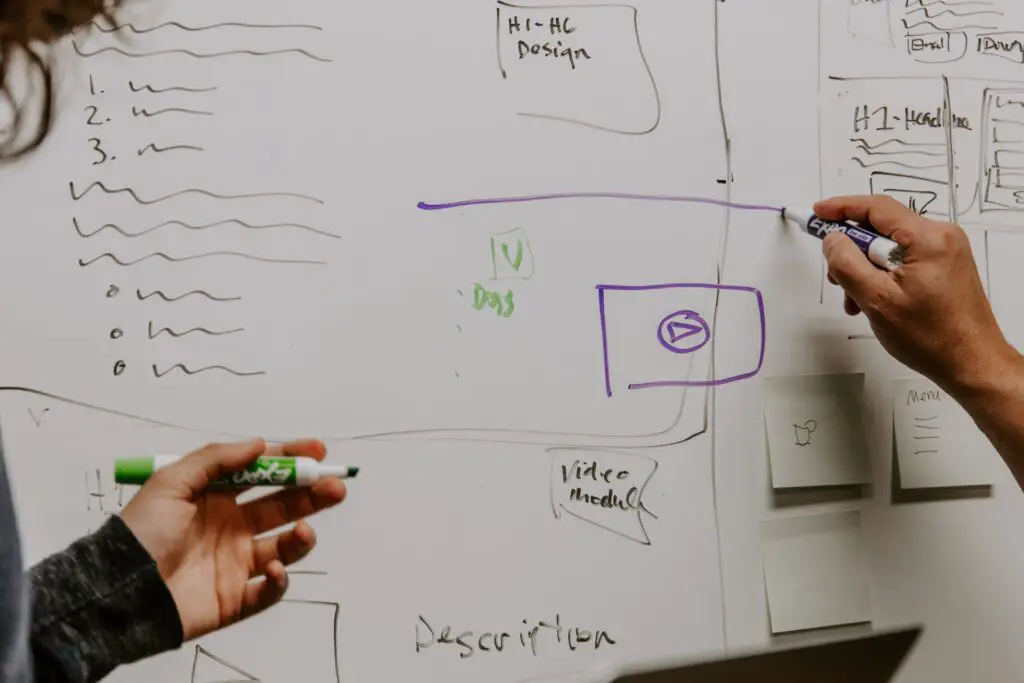There are certain types of questions in the Reading test of the IELTS where your ability to identify the accuracy of information is judged.
True False Not Given or Yes No Not Given question types judge whether you can infer meaning from the text based on objective evidence.
Both question types are largely similar. True False Not Given questions provide you with statements of fact and you have to determine whether the information in the passage confirms or contradicts the statements.
Meanwhile, Yes No Not Given questions provide you with opinions of the author and your job is to find out whether or not the author of the passage holds those opinions.
For a statement to be classified as True or Yes, there has to be a direct evidence present in the text.
A statement can be termed False or No if information in the text is explicitly contradictory.
Sometimes the information presented in the passage is not enough to confirm or deny the validity of certain statements. In such cases, the answer would be Not Given.
Be very careful to not insert your own knowledge or opinion into the reading of the text. Answers should never be based on anything not directly written in the text.
Although the answers can be found in the text in the same order as the questions, some of the answers would be Not Given, so you will never find them in the passage.
Therefore, it is wise to read all the questions before starting to judge each statement. For instance, if you find the information regarding the first and the third question in the passage, but nothing about the second question in between the two, then the answer would be Not Given.
Each question has keywords which tell you what type of word or phrase to search for in the text.
Most of the times, you have to scan the passage to find the synonym of the keywords in the question.
Pro tips:
- All three varieties of answers will be there for any given set of True False Not Given or Yes No Not Given questions.
- In most cases, the answers to questions which have comparative vocabulary like better, bigger, higher, and more powerful are Not Given.
- Never confuse between True/False and Yes/No. For example, writing “Yes” instead of “True” in True/False questions would be incorrect.
- Write “True”, “False”, “Yes”, “No”, and “Not Given” in complete forms and not “T”, “F”, “Y”, “N”, and “NG”.

IELTS Reading True False Not Given practice
| Digital wallets are everywhere but Nepalis still prefer cash |
|---|
| From petrol depots to butcher shops, a growing number of businesses display a small placard with a QR code on it, notifying customers that the outlet accepts cashless payments. Digitals wallets like eSewa, IMEPay, Khalti and PrabhuPay have proliferated particularly this year, making aggressive marketing pushes into retail. But despite the number of cashless apps available to users, most consumers still prefer cash, according to service providers and vendors. According to Nepal Rastra Bank – the central bank of Nepal – the number of mobile banking users soared five-fold—from 1.75 million in 2016 to 8.34 million in 2019. That translates to around 29 percent of the total population. Data also shows that more than 52 percent of internet users in Nepal avail mobile broadband services. But according to service providers, it could take some time for consumers to adapt to cashless transactions. “The majority of our customers are either teenagers or young professionals and while teenagers are more tech-savvy, they do not hold bank accounts,” said Dipesh Bhattarai, a cashier at the Cityscape restaurant in New Baneshwor. “Young professionals sometimes opt to pay through digital wallets but not that often. Even customers who work at financial institutions and are fully aware of digital wallets prefer cash or debit cards.” At Three Brothers Oil Store in New Baneshwor, proprietor Lileshwar Pradhan recently revamped the fuel depot’s look with billboards from IMEPay, even announcing Rs2 cashback on every litre of petrol. “Despite the offer, transactions taking place through digital wallets are minimal,” said Pradhan. “The station sees an average daily transaction of around Rs5,000 through digital mediums and that is nominal, compared to the daily cash turnover.” According to Pradhan, going fully cashless would rid the station of the hassle of counting cash and depositing it in the bank but due to queues at petrol pumps, digital wallets have not proved to be a convenient payment solution, despite loyalty bonuses and cashback. Ten years since Nepal saw eSewa, the country’s first digital payment platform, make its foray into the country, rigid consumer behavior, trust issues and the failure to develop a large payment ecosystem mean there is still a long way to go, according to mobile wallet entrepreneurs. “Only three percent of total transactions throughout the country are cashless and although the user base is expanding, it will take a lot more time to reach the cashless frontier,” said Amit Agrawal, co-founder of Khalti. “To boost digital payments, the government should gradually demonetize its revenue source points and service providers should invest prominently in the safety and security of payment systems before consumers begin to trust and use such mediums.” According to vendors and service providers, announcing Value Added Tax (VAT) refunds for digital wallet users will not boost the user base unless the offers are more lucrative, merchants operate under a transparent VAT mechanism, and the process to claim refunds is made easier. The central bank, through its monetary policy for the current fiscal year, had announced a 10 percent VAT refund for digital transactions. “When you do the math, the amount you get back is minimal because the refund is not for the full bill but only the VAT amount, which translates to just 1.3 percent of the total purchase,” said Bhattarai. “Even the process of claiming such a refund is cumbersome.” Service providers also point to patterns of behavior that are hindering the transition to a cashless society, despite central bank officials, including the governor, calling for the robust adoption of financial technologies and underscoring the need to go cashless. “Our merchant base is expanding as we are focused on previously unspecified sources, such as gas stations and grocery stores, but it will take time for the user base to grow,” said Suman Pokhrel, CEO of International Money Express. “We are in the infancy stage in terms of being a cashless society because consumers have yet to develop trust in digital wallets.” According to Pokhrel, the government needs to promote the use of digital wallets at a source of revenue collection. The private sector too should invest heavily in building top-notch payment platforms and persuading users to choose digital wallets over banknotes. But according to central bank officials, the growth of digital wallets has been hindered mainly because of the level of penetration of such services and awareness among vendors, consumers and the government. “The user base of both vendors accepting payments through cashless channels and consumers willing to use such mediums is too low,” said Laxmi Prapanna Niroula, spokesperson at Nepal Rastra Bank. “In some instances, there are consumers ready to make a payment through digital wallets but the vendor has no system to accept it.” According to Niroula, four forces—the government, consumer, service providers and vendors—should work in tandem if the goal is to move towards a cashless future. “The economy would face fewer burdens, be more instant, transparent and productive,” he said, “while billions of rupees that go into printing or storing banknotes every year would be saved.” |
| This text has been adapted from a news article by Prahlad Rijal published in The Kathmandu Post on 29 November 2019. An archive of the original article can be found at https://kathmandupost.com/29/2019/11/29/digital-wallets-are-everywhere-but-nepalis-still-prefer-cash |
Do the following statements agree with the information given in the passage?
In boxes on your answer sheet, write
TRUE if the statement agrees with the information
FALSE if the statement contradicts the information
NOT GIVEN if there is no information on this
1 The majority of Nepali population uses mobile banking services.
2 Sales of petrol at Three Brothers Oil Store increased after refurbishment.
3 Digital payment system started a decade ago in Nepal.
4 Businesses have demanded higher subsidies in order to proliferate online payments.
5 Citizens are actually getting only 1.3 percent discount on their Value Added Tax payments.
Click to reveal answers »
1. False, 2. Not Given, 3. True, 4. Not Given, 5. True
IELTS Reading Yes No Not Given practice
| Has doing business become easier in Nepal? |
|---|
| Nepal has jumped to an all-time high of 94 out of 190 economies in the World Bank’s ease of doing business rankings, on the back of improved credit information availability, easier cross-border trade, and enforcement of contracts. It is the biggest leap—of 16 places—the country has made in over a decade in the rankings. Last year, it was ranked 110th, just one point above its 2008 ranking, displaying barely any progress in 10 years when it came to doing business in the country. Nepal fell five places from 105 in 2018 to 110 in 2019, prompting the government to hold multiple meetings with World Bank officials and seek suggestions on areas that needed to be prioritized to improve the ease of doing business. Among the 10 indicators used by the World Bank to calculate the ranking, Nepal scored highest on access to credit information—37th out of 190—as it has improved access by expanding the coverage of the credit bureau, according to the report published on Thursday. Nepal also ranked relatively high on cross-border trade—60th out of 190—as it has reduced export costs and improved import times by opening the Birgunj Integrated Check Post. According to bankers, expansion of parameters and robust functioning of the Credit Information Bureau, which oversees the credit functions of 116 banks, financial institutions and debt seekers, helped push Nepal up the rankings. Financial institutions have also opened 2,000 new branches in over a year while commercial banks have expanded branches to 739 out of 753 local units, leading to the increased flow of banking information. Despite this overall progress, Nepal is still poorly ranked, in 135th position, when it comes to starting a business. The country has made things more difficult, according to the World Bank, by requiring an in-person follow-up for employee registration for social security. As per the report, it takes an average of 22.5 days to complete eight procedures for starting a business, at a cost of 20.2 percent of income per capita. Business in high-income OECD countries can be started in nine days through five procedures and at a cost of just 3 percent of income per capita. The country has also made paying taxes more difficult with the introduction of new gratuity contributions by employers. Amid better ranking but difficulties in starting businesses and paying taxes, economists and analysts say that the improved rank can be attributed to procedural ease rather than the implementation of regulations. Nepal enacted several new laws, including the Foreign Investment and Technology Transfer Act, Industrial Enterprise Act and Special Economic Zone Act, intended to attract increased foreign investment last year. The doing business index has improved primarily due to regulatory reforms. During the recent infrastructure summit, the Confederation of Nepalese Industries had complained that there was a huge funding gap in capital projects in the country and currently available financial instruments and modalities for investment in infrastructure were not adequate. This shows that despite improvements in some sectors, primarily on the regulation side, the higher ranking has not translated into an investment-friendly environment. The index draws data from a questionnaire administered to professionals who oversee or advise on legal and regulatory requirements for doing business. According to the World Bank, most respondents are legal professionals such as lawyers, judges or notaries. In addition, officials of the credit bureau or registry complete the credit information questionnaire. Accountants, architects, engineers, freight forwarders and other professionals answer the questionnaires related to paying taxes, dealing with construction permits, trading across borders and getting electricity. This profile of respondents to the questionnaire perhaps accounts for the report’s focus on regulatory measures over their implementation. Out of the eight economies in South Asia, Nepal has been ranked third in this year’s rankings, behind first-placed India and Bhutan. |
| This text has been adapted from a news article by Prahlad Rijal published in The Kathmandu Post on 24 October 2019. An archive of the original article can be found at https://kathmandupost.com/29/2019/10/24/is-doing-business-getting-easier-in-nepal |
Do the following statements agree with the views of the writer in the passage?
In boxes on your answer sheet, write
YES if the statement agrees with the views of the writer
NO if the statement contradicts the views of the writer
NOT GIVEN if it is impossible to say what the writer thinks about this
1 The government of Nepal actively tried to improve its position in the World Bank’s rankings.
2 The increased number of banking institutions in Nepal played a part in improving Nepal’s financial scenario.
3 Business startups in Nepal struggle for investment from banks.
4 A higher global ranking in business indices is meaningless unless investors are encouraged.
5 India and Bhutan fall behind Nepal in the World Bank’s ease of doing business rankings.
Click to reveal answers »
1. Yes, 2. Yes, 3. Not Given, 4. Yes, 5. No
Next lesson:
IELTS Reading: Diagram labeling


Hii!! your practice lessons are very useful and you are doing a great job for providing the students with lots of excercises, but I have confusions on some of your answers from the reading section of True, False and Not Given as well as sentence completion part.
If you can please provide explanations for each and every answer about a particular topic. So it would be more beneficial for the student’s to measure their lackings.Thanks once again for the wonderful work.
Thank you so much for your comment and suggestion Sayeed.
Here’s an explanation for the True, False, Not Given questions above:
1. False. In the third paragraph, it has been mentioned that mobile banking users are “around 29 percent of the total population”. Therefore, they are not the majority.
2. Not Given. The fifth paragraph talks about Three Brothers Oil Store and its customers who use digital wallet system. But overall sales figures before and after refurbishment have not been mentioned. Hence, whether the sales of petrol increased or decreased cannot be determined.
3. True. This line from the seventh paragraph confirms the statement: “Ten years since Nepal saw eSewa, the country’s first digital payment platform, make its foray into the country,…”.
4. Not Given. There is no reference to subsidies in the entire text.
5. True. There is this quote in the tenth paragraph which makes this a true statement: “…which translates to just 1.3 percent of the total purchase”.
For an explanation of answers to other questions, I request you to comment on the respective pages. I will post the explanation in the replies.